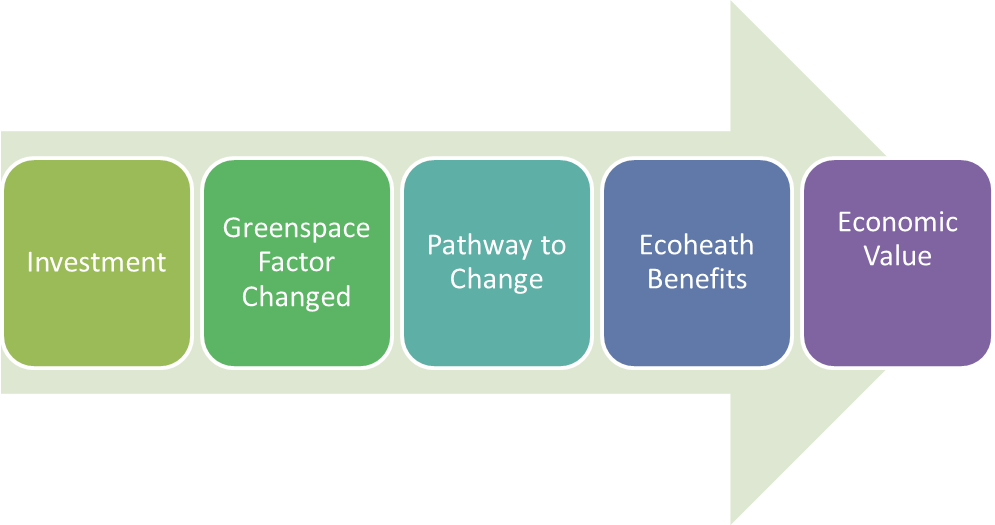A Conceptual Framework to Understand the Business Case for Ecohealth
Greenspaces are good for our health and well-being and we need more of them. In addition to providing numerous ecosystem benefits, greenspaces provide opportunities to exercise, reduce anxiety, make social connections and generally have a reprieve from the stresses of everyday life.
Research confirms that greenspaces provide multiple health and well-being benefits including decreased depression and anxiety; reductions in obesity, type 2 diabetes, cardiovascular and respiratory illnesses as well as better birth and developmental outcomes.
EcoHealth Ontario collaborated with the Greenbelt Foundation and Green Analytics to produce a conceptual framework for practitioners, researchers and decision-makers to understand the business case for specific greenspace investments and inform policies, programs and planning decisions that will enhance greenspaces and their beneficial outcomes. This tool can then be used to communicate the business case for more greenspace investments.
A Framework Towards a Healthier Society and Cost Savings
The conceptual framework draws from an extensive literature review to assist users to navigate a decision-making process for establishing the case for greenspace investments. It proposes pathways between greenspace investments and public health outcomes ultimately to economic benefits from savings accrued from healthier people and environments.
The Framework in Action
Three case studies were undertaken in 2019/2020 applying the conceptual framework in order to understand public health, environmental and economic benefits from using ecohealth practices.
Different Pathways to Invest in Greenspaces
Based on a review of the research literature, our goal of improved health and well-being can be achieved best through greenspace investments using these different pathways:
Pathway 1: Invest in Greenspaces to Increase Physical Activity
Create greenspaces in order to increase physical activity opportunities for people. According to the World Health Organization (WHO) physical inactivity is the fourth leading risk factor for global mortality. More physical activity contributes to reduced cardiovascular disease, diabetes, cancer, hypertension, obesity, depression, osteoporosis and premature deaths.
Pathway 2: Invest in Greenspaces to Decrease Stress, Increase Attention and Facilitate Social Connections
Our physical and mental health is significantly improved when we spend more time in higher quality greenspaces. Just 30 minutes or more spent in greenspaces over the course of a week can help reduce depression and high blood pressure by up to seven to nine percent.
Pathway 3: Invest in Greenspaces to Reduce Environmental Pollution (Heat, Air, Noise)
Greenspace investments to enhance biodiversity and increase tree canopy contributes to decreasing air pollution, heat and noise pollution. Decreased exposure to these stressors improves our health and well-being.
Pathway 4: Invest in Greenspaces for Increased Climate Resiliency
While not within the scope of the project to explore more fully, this pathway is included in the conceptual framework so as not to lose sight of its importance. All of the actions resulting from investments in greenspaces will contribute to creating greater resiliency for the environment, which in turn will result in positive health and well-being outcomes for people as well.
What Types of Greenspace Investments Do We Need?
Adding new parks
Expanding existing parks
Improving or adding new amenities (i.e. trails)
Improving the quality of greenspace by enhancing biodiversity or increasing tree planting for more canopy cover
Improving accessibility to greenspaces with transit, bike paths and connected walkways
Program and policy changes to increase the number and diversity of people able to use greenspaces



